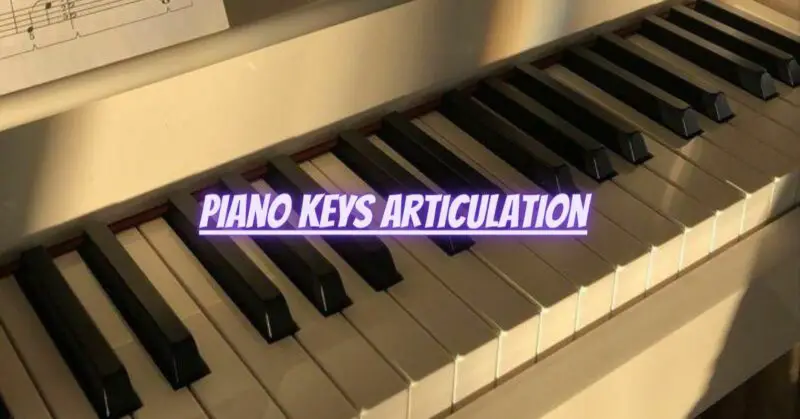Articulation is the language of expression on the piano keys, shaping the character and personality of every musical phrase. As a pianist, understanding and mastering articulation techniques is essential for creating dynamic and captivating performances. Articulation refers to how each note is played in terms of its duration, intensity, and connection to the surrounding notes. In this article, we will explore the enchanting world of piano keys articulation, understanding its types, techniques, and significance in piano playing.
1. Types of Articulation:
Various articulation markings and symbols guide pianists on how to play each note. Some common types of articulation include:
- Legato: Smooth and connected playing, where notes flow seamlessly into each other without pauses or breaks. It creates a fluid and expressive sound, ideal for lyrical melodies.
- Staccato: Short and detached playing, where each note is played with a quick release from the key. It adds a playful and energetic quality to the music.
- Tenuto: Sustained playing, where notes are given their full value and slightly emphasized. It adds weight and expression to individual notes.
- Marcato: Strong and accented playing, where notes are played with emphasis and distinction. It creates a bold and expressive effect.
2. Expressive Playing:
Articulation allows pianists to express emotions and add depth to their interpretations. By combining various articulation techniques, pianists can create a palette of emotions, from delicate and introspective to powerful and dramatic.
3. Phrasing and Interpretation:
Articulation plays a crucial role in shaping the phrasing and interpretation of a musical piece. It helps delineate musical phrases and highlights important melodic lines.
4. Articulation and Dynamics:
The relationship between articulation and dynamics is closely intertwined. Adjusting articulation in combination with dynamic changes adds complexity and nuance to a performance.
5. Finger and Hand Techniques:
Mastery of articulation requires precise finger and hand techniques. Pianists must develop control over finger movements and know when to lift the fingers or use the sustain pedal to achieve the desired effect.
6. Attention to Detail:
Articulation requires attention to detail and sensitivity to the musical context. Pianists must carefully observe the markings and apply them appropriately to create an authentic interpretation.
7. Experimentation and Exploration:
Articulation techniques are not fixed rules but rather opportunities for artistic exploration. Pianists can experiment with different articulation styles to find what best suits the mood and style of the music.
8. Varying Articulation:
In a single piece, varying articulation can add interest and captivate listeners. Combining legato, staccato, and other articulation types creates contrast and keeps the music engaging.
9. Connection and Expression:
Articulation helps connect pianists with the emotional essence of the music. By infusing their playing with expressive articulation, pianists can communicate their interpretation authentically.
10. The Art of Subtlety:
The finesse of articulation lies in its subtlety. The ability to create subtle changes in touch and duration adds layers of depth to the performance.
Conclusion:
Piano keys articulation is the key to unlocking the expressive soul of music. By mastering different articulation techniques, pianists can breathe life into their performances, conveying emotions and engaging audiences on a profound level. Articulation allows pianists to shape musical phrases, explore dynamics, and create personal interpretations that resonate deeply with listeners. Embrace the art of articulation, and let its expressive language enrich your piano playing. Through the art of articulation, embark on a captivating musical journey that embraces the beauty and intricacies of musical expression. Happy playing!


